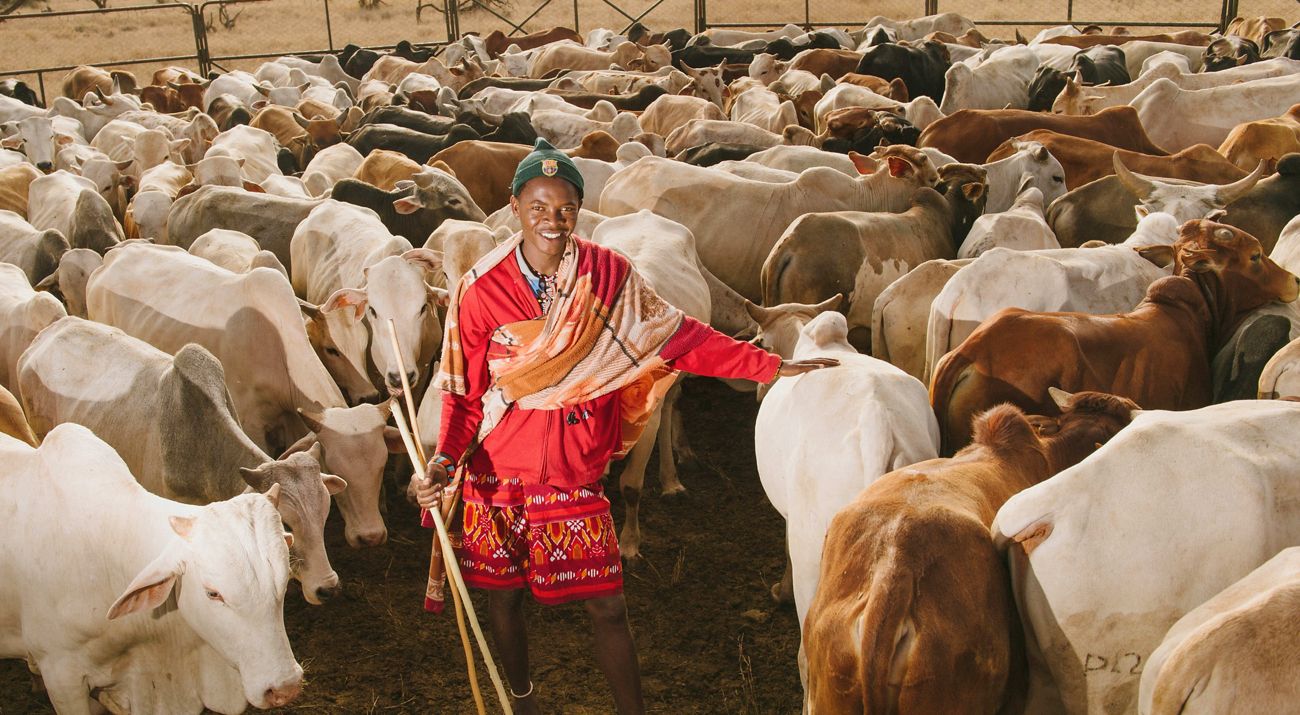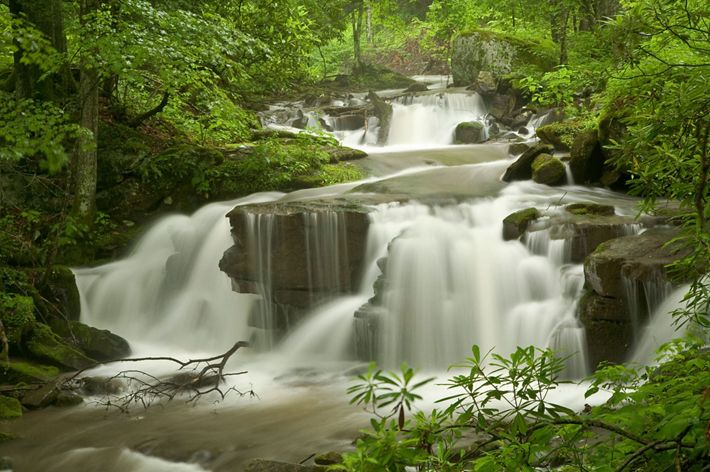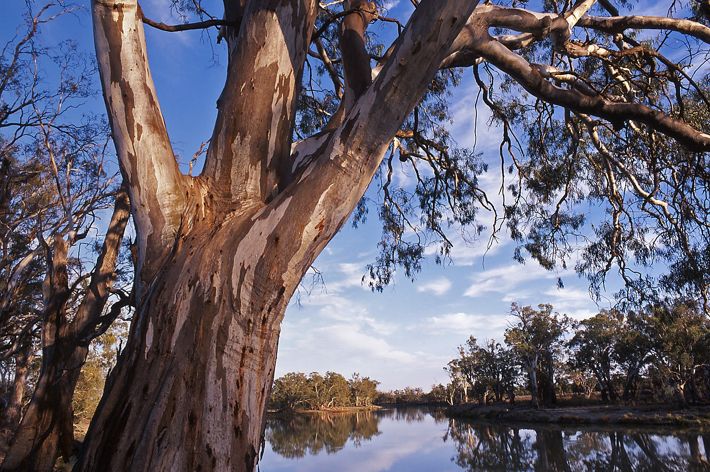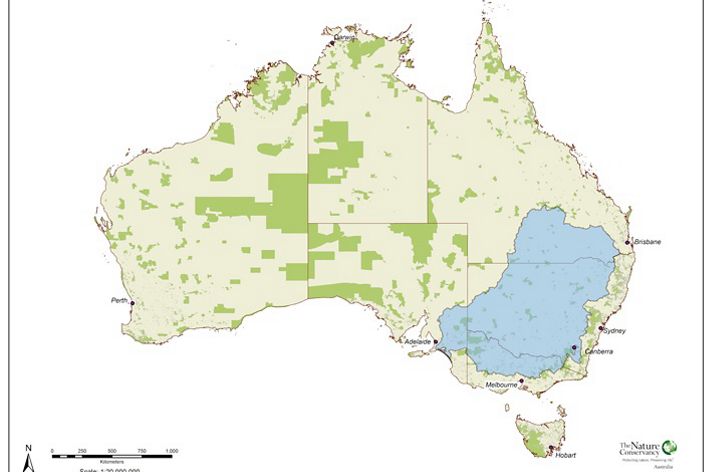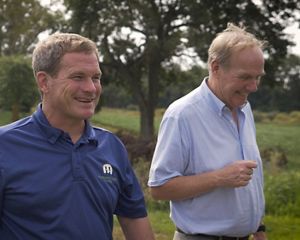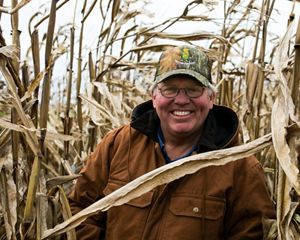Sustainable Agriculture for Habitat Conservation
Increasing populations and rising standards of living are driving agricultural expansion, resulting in habitat loss, land degradation and increased carbon emissions. Around the world, 55 percent of new agricultural land is created from forests and agricultural production and conversion contribute up to 30 percent of annual greenhouse gas emissions.
Appropriate land use regimes informed by conservation mapping—The Nature Conservancy’s expertise—coupled with intensification of production on our current agricultural footprint can provide food security for the projected population of 9 billion people while also lessening the impacts on nature. Supporting behavioral change and using sustainable technologies will make these practices and strategies the norm at farm and landscape levels—improving yields and reducing environmental impacts.
In order to avoid the conversion of forests and grasslands to agricultural land, NatureVest’s work in sustainable agriculture seeks to create financial incentives for smallholder farmers to intensify production on current agricultural lands while promoting more sustainable land use practices. Through on-farm and supply-chain interventions, we are able to create value that will support these sustainable practices and increase revenues for producers.
Water Markets
Water is the silent currency that runs through the global economy. In a world of approximately seven billion people—with three billion new consumers coming on stage by 2030—and over $70 trillion of global production, vast amounts of water are needed to irrigate our crops, cool our power plants, supply our manufacturing and support our cities.
We are staring down a future that may require as much as 40 percent more water than today’s accessible supply. Our traditional practices are proving increasingly unsustainable. In many places, growing demands for water are running into the limitations of what nature can easily yield to us, and the cost of delivering an additional liter of water is increasing.
Water markets—which reward the more efficient use of water by establishing water’s unique value as an asset—are emerging as a viable approach to managing water supplies more sustainably and productively. Water Sharing Investment Partnerships, developed by The Nature Conservancy’s conservation investing unit, NatureVest, as well as it Global Water team, utilize the framework provided by water markets to help rebalance water use for the benefit of freshwater ecosystems and underserved groups while continuing to support the agricultural communities whose livelihoods rely on this important resource. By becoming an active participant in the water markets, community water trusts are also able to benefit from the underlying financial appreciation of water as an asset.

Investing Out of the Global Water Crisis
Exploring the potential for water markets and impact investment to serve as part of the solution to global water scarcity.
Murray-Darling Basin Balanced Water Fund
The Murray-Darling Basin (MBD) is one of the world’s largest and most productive river basins, accounting for AU$19 billion dollars of agriculture production and providing one-third of Australia’s food supply. The basin covers a huge area, over 1 million square kilometers (386,102 square miles) spanning five states and territories. It also plays an important role in supporting biodiversity for a vast array of plants and animals and ecosystems including many threatened species.
Today, over 80 percent of the Basin’s wetland ecosystems are in poor health due to extensive water diversions through a canal and dam system that captures any excess runoff, over-allocation of water entitlements and the drying effects of climate change.
Balancing competing needs
As part of a broader effort to protect the Basin’s water supplies and those that depend on it, NatureVest, launched the Murray-Darling Basin Balanced Water Fund, the first impact investment-driven solution to use water markets to balance the water needs of farmers, communities and nature. The AU$27 million, Fund provides a unique opportunity to invest in permanent water rights that will provide water security for agriculture and restore critical wetlands, while delivering financial returns to investors.
In addition to NatureVest, others involved in the creation of the Fund include the Conservancy’s Water program, its Australian division and the Conservancy’s local collaborators: the Murray Darling Wetlands Working Group and Kilter Rural, an Australian based asset management firm. The Fund will work proactively with farmers to acquire and hold a portfolio of permanent water rights. It will then sell or lease the majority of the annual temporary water allocations back into the agricultural community, while donating the remainder of the allocations to the environment each year. The Fund is structured in such a way that the majority of the environmental donations will occur in years of high rainfall when farmers need the water least.
The Fund’s environmental watering program will target wetlands rich in conservation value located on private lands that are not currently targeted by the Australian Commonwealth’s existing environmental watering plan. The Fund’s long-term conservation goals include improving waterfowl, fish and amphibian breeding and migration, as well as restoring the health of native plants. Additionally, the Fund will look to restore important Aboriginal cultural and spiritual lands, many of which include wetland areas.
Innovation for Impact
The Fund demonstrates how an impact investment-driven solution can generate environmental and social benefits at a far greater scale than what could be achieved under a traditional philanthropy-funded model. The Fund will seek to scale the Fund to AU$100 million. The Fund also represents an attractive opportunity for investors to align their portfolios with their values—seeking financial returns while generating important social and environmental outcomes.
NatureVest plans to replicate the success of this Fund in other areas of the world and is now in the process of scoping various river basins across the western United States and Latin America, where a similar model of water reallocation through investor-funded solutions can be applied.
Murray-Darling Basin Balanced Water Fund In the News
Livestock to Markets
Livestock to Markets creates a unique and powerful linkage between improved livelihoods for Samburu pastoralists in Northern Kenya and expanded, healthy habitat for wildlife of the Northern Rangelands of Kenya. This initiative serves as a model for sustainable natural resource management in the face of population growth and climate change, providing a powerful demonstration of how people and nature can thrive together.
For thousands of years, cattle herders have shared Kenya’s northern grasslands with elephants, zebras, giraffes, rhinoceros and other wildlife coexisting in a relatively stable environment. In recent years, however, things have changed—largely due to poor access to markets. A growing number of pastoralists have amassed exceedingly large herds that overgraze the land and cause conflict amongst communities over the limited grazing space. During increasingly severe droughts, fear of mass cattle starvation drive herders to take their cattle on risky treks to market, where they are forced to sell the cows that survive—weak and underfed—at low prices.
Quote: Tom Lalampaa
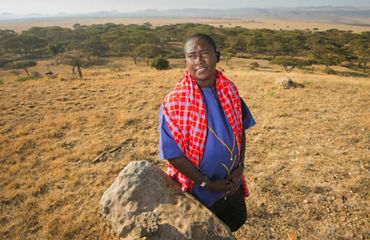
“The cattle are there. The numbers are there. The market is there. It’s really just about scaling it up, and I’m really glad that The Nature Conservancy saw this opportunity and are with us in scaling this up.”
This cycle has caused severe damage to Kenya’s grasslands and increased the risk of dangerous interactions between the herders and wildlife, both of which threaten the animals that depend on the grasslands for survival. With financing from The Nature Conservancy, the Northern Rangelands Trust in Kenya (NRT) has been able to create a for-profit subsidiary (NRT-Trading) to expand the Livestock to Markets program. NRT-Trading supports local cattle herding communities who agree to adhere to improved grazing practices. These communities are then responsible for managing the territories over which they graze their livestock, creating a local “conservancy” model. Since 2010, NRT uses grant capital to buy cattle directly from local conservancies at reasonable prices, feed the cattle on nutrient-rich grasses, process the meat and then sell directly to the markets in Nairobi at higher grades and prices than the herders could otherwise have obtained. Furthermore, every animal that is purchased has a levy attached to it that provides funding to the communities, to use for conservation, healthcare and education. The value created through this transaction is thereby shared between NRT and the local communities, generating conservation, financial and social outcomes.
With a $3.5 million investment from NatureVest, NRT will be able to increase by a factor of ten the number of cattle it currently buys. This deal will lead to improved herding practices across 19 local conservancies, allowing for better management and rejuvenation of 1.25 million acres of nutrient-rich grasslands and habitats for wildlife.
In addition, the deal will further improve household incomes in the region and allow for greater investment in wildlife patrols that help to lower the incidence of elephant and rhino poaching—a critical threat to these endangered species. Elephant poaching in the NRT conservancies has already declined by nearly 40 percent over the past 3 years.
